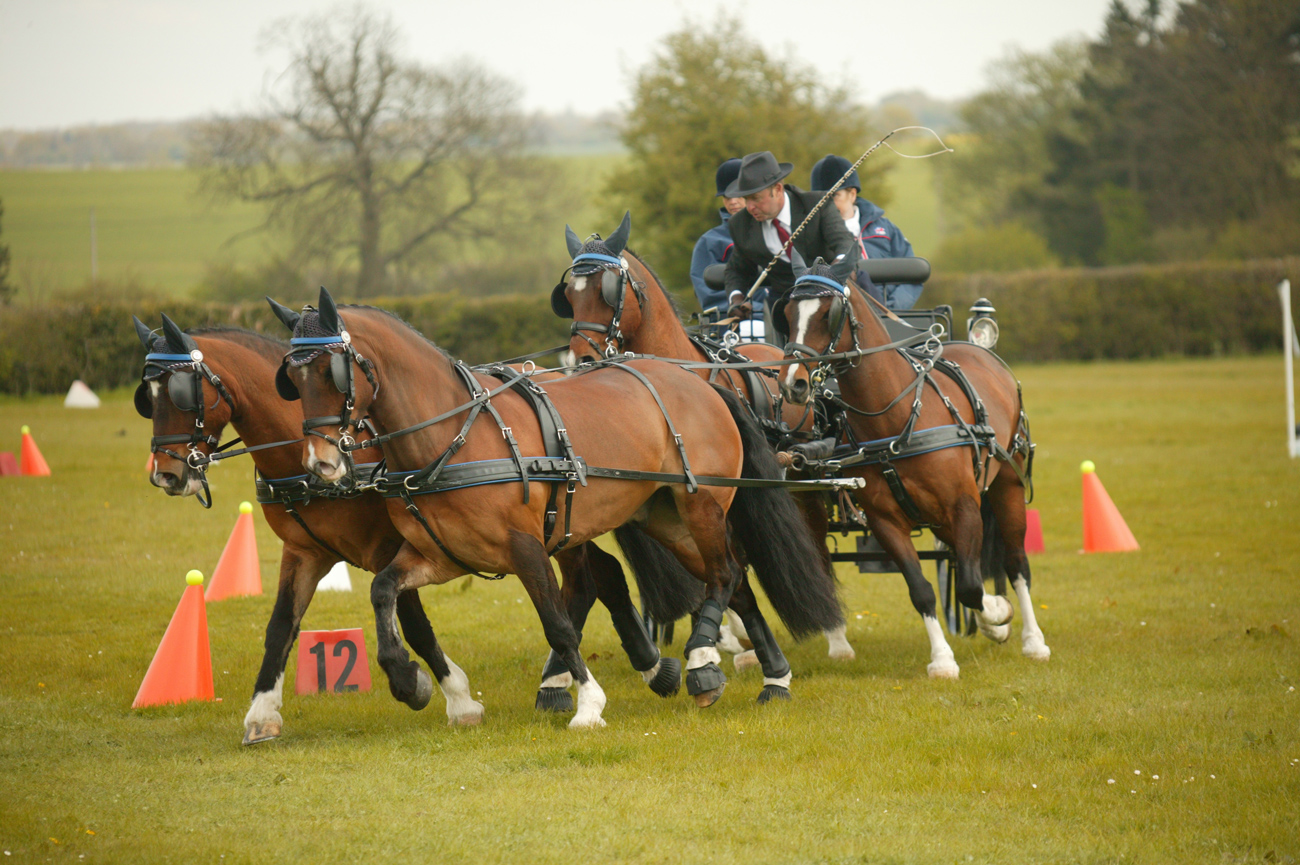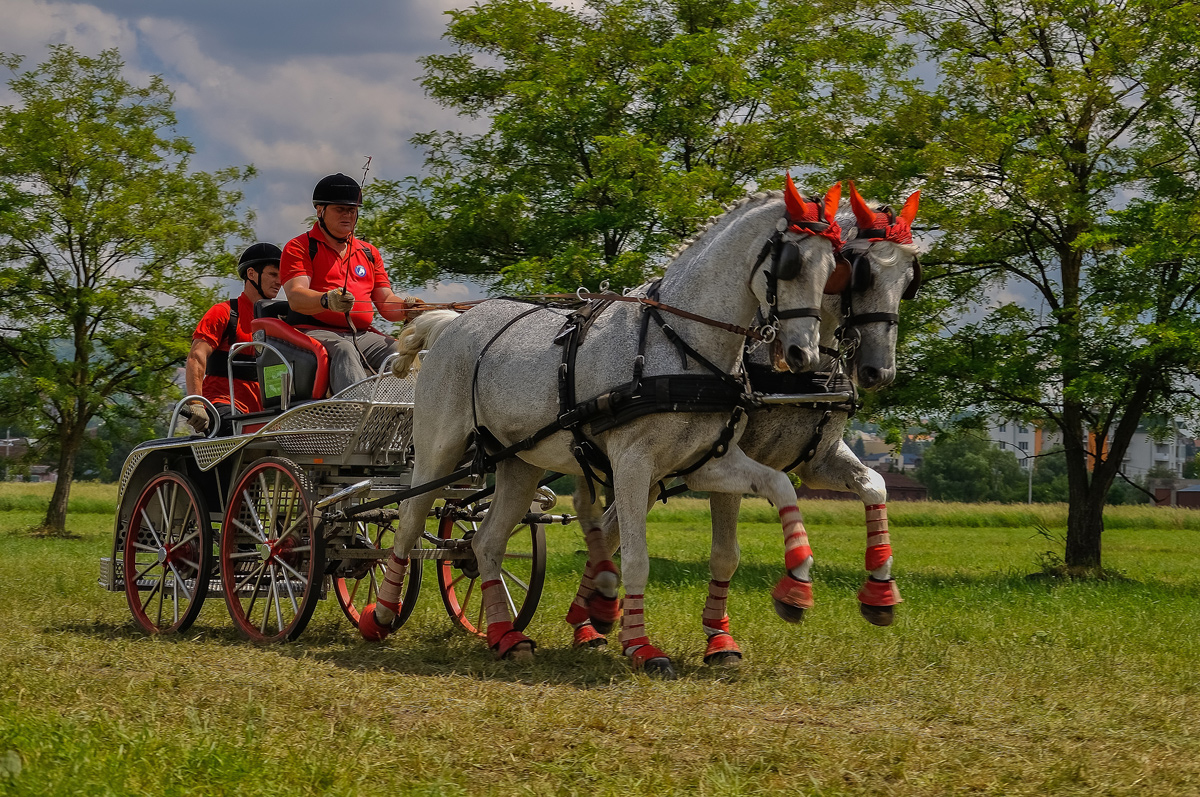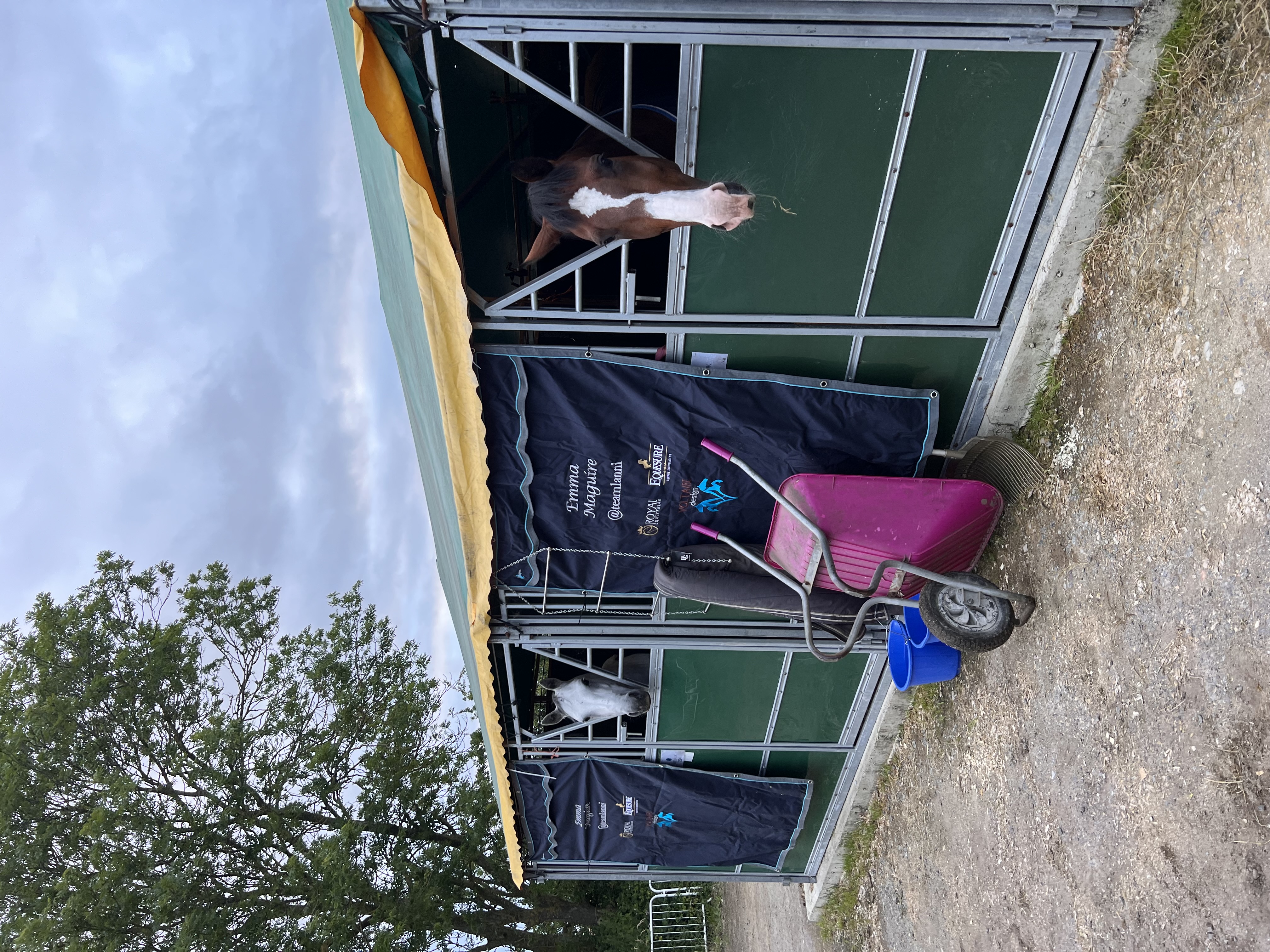Has your daily hack become a bit monotonous? Are you and your equine friend looking for a new challenge? If so, then carriage driving is well worth a look. From teenagers to centenarians, carriage driving is popular among all ages of horse riders, and is suitable for all varieties of horses.
Whether you’ve got the competitive spirit needed to take part in horse driving trials or you just prefer to explore the countryside from a different perspective, this sport has something just for you.
If you haven’t come across carriage driving before then you might be wondering what it’s all about. Give our quick guide a read and all will become clear.
Before heading out, always make sure you’ve got the right horse rider insurance suited to your needs. Give the friendly team at Equesure a call today and discuss your requirements.
What is carriage driving?
At its most basic, carriage driving is where a driver controls a two or four-wheeled carriage that's hitched to a single horse, a pair, tandem or a four-in-hand team.
It’s well-regarded as a friendly and inclusive sport suited to all ages and abilities. One of the great things about it is there are many opportunities to get involved. These include:
- Driver – You really have to know your horses and have a great relationship with them in order to guide them round the tricky courses.
- Groom or backstepper – An essential member of the team that every carriage must carry (indeed four-in-hand teams must have two grooms). Grooms perform a variety of roles including emergency help, navigation, and guiding the driver. On uneven ground or when negotiating tight turns the groom has to help balance the carriage by shifting their weight.
- Volunteers – From time keeping and course building to course/arena stewards and score collectors there are a huge number of opportunities for volunteers to make themselves an integral part of a successful carriage driving event.
There are many different types of carriage driving available. But perhaps the most well-known is that of horse driving trials.
These are highly competitive three-day events made famous by HRH Prince Philip who helped formulate the rules of the sport over 50 years ago.

Why take up carriage driving?
There are many ways to get involved in carriage driving. Whether as a sport or just as a hobby, it’s easy to involve the whole family and any friends who are interested in tagging along for the ride.
Here are just some of the reasons you might want to take it up:
- From young to not-so-young the whole family really can get involved.
- It’s a very social sport and there’s a lot of camaraderie.
- Most events end up being big family gatherings with a delicious picnic at the end.
- It’s a great use for an outgrown pony and will give them a new lease of life as they get older.
- It can be enjoyed whatever your physical strength. It’s extremely popular among those who now find riding more difficult but still enjoy spending time with horses. Prince Philip himself took it up at 50 years old when he felt he needed to give up polo.
- It gives you the opportunity to experience amazing venues not normally open to the public, like Sandringham Estate and Cirencester Park.
- If you have a competitive streak, you could even find yourself competing at international level! Indeed, it’s one of the ten international equestrian sport horse disciplines recognized by the Fédération Équestre Internationale.
If you’re interested then the British Driving Society is a great place to start. It has a wealth of up-to-date information, contact details and events to check out.
Why not go along and watch a show or visit a driving yard? If nothing else, it’s a peaceful opportunity to relax in the countryside with your horse.
All about horse driving trials
For fast moving, water-splashing fun you can’t do much better than getting involved in horse driving trials.
These three-day competitions are a true test of skill, endurance and courage. Competitors are divided up depending on how experienced they are, whether they're driving horses or ponies, and the number of horses/ponies they're driving.
The competition is split into three distinct phases to test different elements of your carriage driving ability.
Day one – Dressage
Here drivers and their teams must complete a strict sequence of set movements (all from memory). Taking place in an arena measuring 40x100 metres, it’s an incredible display of horse schooling and obedience.
Day two – Marathon
The adrenalin really starts to get pumping with drivers skilfully guiding their horses through a set of three cross-country marathon courses.
Racing against the clock you’ll need to get round a whole variety of natural obstacles including water, steep banks and much more in the final thrilling 10km stage. Prepare to feel your heart pumping as the mud starts flying!
Day three - Cone driving
As if the previous two days weren’t enough, day three really is a fitting climax to the event.
The carriage driving equivalent of show jumping, cone driving is a true test of the skill, competence and nerves of the driver, and the suppleness and obedience of the horse.
It’s a race against time to drive the carriage through narrowly spaced pairs of cones placed around the course – sometimes with only inches to spare!
For more information on driving trials and training opportunities, visit the British Carriagedriving website. It’s the governing body for the sport in the UK and has a great list of affiliated driving clubs.
Other carriage driving events
Horse driving trials are clearly a lot of fun but when you’re just starting out then it might be worth trying one of these events first.
That way you’ll be able to discover whether there’s a particular facet of driving which appeals to you.
You don’t always have to throw yourself in at the deep end – steadily working towards a carriage driving goal over time might be the better option.
- Pleasure Driving – The most obvious place to begin. Driving for pleasure is an enjoyable way to try the sport out in stunning British countryside and exclusive private estates. There are many such events throughout the year, sometimes combined with leisure riders and even cyclists. There’s lots of useful information on this pleasure driving website.
- Private Driving – The very height of elegance and tradition, this is showing but with a horse and carriage. So, you’ll need to like dressage and your horse and carriage must be super smart. Oh, and did we mention, gentlemen are often seen wearing morning suits and top hats, while ladies wear a fine array of outfits.
- Scurry Driving – If you feel the need for speed then try the fast-paced equestrian sport of scurry driving. Here small, lightweight carriages and teams of sprightly ponies race around a timed course of cones, right angles and slaloms at breakneck speed. Expect thrills, spills and a lot of fun. Want to know more? Try the Scurry Driving Association. There are now about 25 major shows throughout the country and two main championships to qualify for.
- Indoor Driving – Based on horse driving trials but held over just a few hours in the comfort and convenience of an indoor arena. This event is a perfect mash-up of dressage skills coupled with obstacles navigated at speed. Why not join the Indoor Carriage Driving Club and have a go? Membership’s only £30 - what a bargain!
- Spider Driving – If you like to exercise your mind and your body then this could be for you. It’s essentially orienteering in a carriage. Similar to point-to-point, you and your carriage have to get from one defined point to another in the fastest possible time.
Getting started in carriage driving
If you’ve never had a go at carriage driving before, then we recommend getting some more experienced help or tuition first.
The British Driving Society is a lot of help for beginners. They’ve got plenty of details for who to contact in your area if you want to have a go.
Visiting a local driving yard on a taster day is a great way to observe carriage driving or enjoy some invaluable lessons from an expert.
From understanding the different equipment you’ll need to how to put a horse between the shafts and go out for a drive, it’s all well worth the effort. You might even get the opportunity to take the reins and have a go yourself!

Do you need any special kit?
When starting out, there’s really no need to go buying lots of extra kit. If you’ve got in contact with a driving yard as we suggested, then they will provide you with a suitable horse and vehicle.
All you really need is a correctly fitting riding hat, leather riding gloves to protect your hands and some warm clothing and a smart blanket. Remember, because you’re sitting it’s all too easy to get cold even on a warm day.
If you decide to stick with the sport then eventually you’ll need a spare stable for the carriage, and a suitable harness.
If you plan to compete or show then you will need a leather harness for your horse and an appropriate costume for yourself. Don’t forget you’ll also need a suitable vehicle to transport both horse and carriage to any event.
Equesure not only provides horse rider insurance, but also horse trailer insurance, carriage insurance and horsebox insurance. Give us a call to find out about our whole range of insurance cover.
Can I use my own horse or pony?
Eventually, perhaps. But when starting out, probably not. While you and your equine friend may dream of carriage driving together, it isn’t straightforward.
With training, many horses will transfer well from ridden to driven work but not all. Be aware that breaking a horse to drive is the same as breaking a horse to ride, a pretty specialist job.
First off, speak to your driving yard about whether your horse or pony would be suitable for driven work.
While almost any horse or pony can pull a carriage there are certain breeds which go well with certain types of carriage and styles of driving. For example, Welsh ponies are perfectly suited to scurry driving, they just seem to love it!
Where can I drive?
If you just want to get out with your horse and carriage to enjoy the countryside then a great place to start is with a copy of the Ordnance Survey maps for your area.
It will show you all the local bridleways and byways. Byways are usually fine to use as they’re open to all vehicles and therefore wider. However, you’ll need to explore local bridleways first, to see if they’re accessible to a carriage.
If you’re part of a local driving club then they will also be able to help with finding suitable routes.
Another great resource is the BHS National Equestrian Route Network. This is freely available to view on RideMaps UK.
Check out the Lindsey Trail, a 69-mile-long route through the Lincolnshire Wolds accessible to carriage drivers, horse riders, cyclists and walkers.
The BHS Paralympic Legacy Access Project is also worth exploring. This is a group of 20, 12-mile circular routes across Britain that suit the needs of carriage drivers with physical limitations.
Protect yourself with horse rider insurance from Equesure
Getting expert advice on carriage driving is important. But you won’t get far if you don’t have appropriate horse rider insurance to protect you and your horse.
With over 60 years of experience in the equine insurance market, our understanding team can offer you a bespoke insurance policy with options tailored for your particular needs and budget.
Whether you’re planning on a gentle hack or a three-day horse driving trial event, Equesure can arrange insurance for you.
We offer personal accident cover up to £20,000, while policies from our varied and trusted panel of insurers can also cover vet fees up to the value of £1,500 (accidental visible injuries only).
Request a quote for horse rider insurance today.
Policy benefits, features and discounts offered may very between insurance schemes or cover selected and are subject to underwriting criteria. Information contained within this article is accurate at the time of publishing but may be subject to change.





